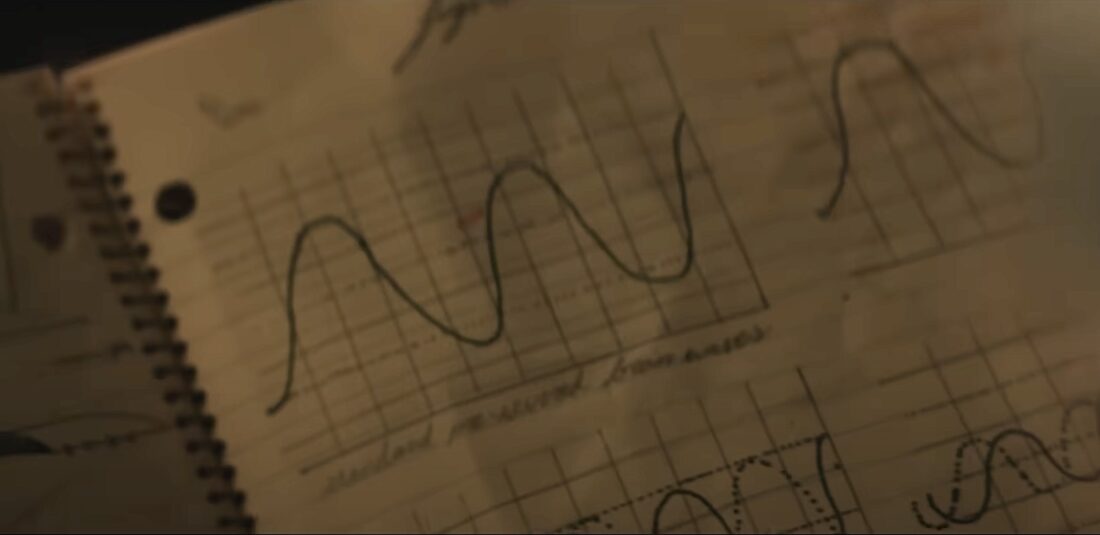“All you will find in there is pain.”
Nostalgia sometimes grabs us in its icy grip and refuses to let go unless we take some kind of action: looking at old photographs, messaging a lost friend, or visiting places where we created memories. For Harmony Cobel, former Manager of the Severed Floor on AppleTV’s Severance, her nostalgia drove her all the way to a lonely, decaying town by the sea full of all her old ghosts—though most of them are more high than haunting.
The town looks like any other desolate seaside town forgotten by time. Harmony remarks it’s older than she remembered with peeling paint on the houses and buildings, the abandoned Lumon Industries factory, and what we can only assume to be forever oppressive cloudy skies leaving the town awash in bluish grey monochrome. It’s not somewhere any of us want to be, let alone visit.
It wasn’t purely nostalgia that drove Harmony to Salt’s Neck, but rather proof of her invention—the work that makes severing the human mind from its own physical and mental experiences possible. Even her estranged relative, an old woman named Sissy caretaking Harmony’s childhood home, was ignorant of Harmony’s invention.
Such is the hold the Eagans have on their esteemed narrative.
And such is the way Harmony wanted to perpetuate the narrative. She is hardly a sympathetic character. Far from it, in fact: we are as annoyed and irritated by her as the innies, as cautious with her as Milchick, and as critical of her as the Board. Her arrogance about all things Lumon was always crystal clear in her dealing with herself, always respectably poised and attired, usually in blue, and her insistence on following the Keir mandates and guidelines equally telling of a woman in middle management, but nothing quite tipping off the fact that she created the severance procedure. Finally, it seemed, something cracked in her to drive all the way to the symbol of childhood trauma that is Salt’s Neck.
The truest thing Sissy said was there was pain waiting for Harmony—who wanted to rummage through her past to find proof of her accomplishments, but all she perpetuated was the patriarchal grip the Eagans had on the town and the acolytes that espoused Keir and the Nine.
But what of this Harmony we’ve come to know late in season two? We first meet her in the first season as a driven, unyielding manager, a staunch devotee of all things Lumon and Keir complete with her own altar and strange fascination that led her to stalk of Mark and his family; she lives next door to Mark, noting his various sleeping and recycling habits, becomes his sister Devon’s lactation consultant, and cozies up to both her and her husband. Her failure to control the innies led to her ultimate downfall, and in Salt’s Neck we find a bombshell—one that I can’t imagine surprised many women viewers of the show: Harmony has written notes that may be evidence that she created the workable version of severance. The severance procedure we now see at Lumon and with our beloved MDR innies. Not only that, but she created it as a young girl in Lumon employ that patriarch Jame Eagan then either took the credit for or stole outright as his own idea. And Sissy seems to be able to easily identify the formulas and sketches in the notebook, suggesting it was easy to read or she, too, had some STEM background. Add to this the idea that Harmony hid the notebook in the bust of Kier, and Sissy then moved it to a cellar for reasons we are unaware of, and, meanwhile Harmony’s mother, her illness and her death, are shrouded in mystery as per Salt’s Neck creepy directive.
We now know the reason Harmony makes her way to her past on the seashore: to find proof she developed the severance procedure. During the episode, we aren’t sure why she needs this proof, whether it is for leverage with Lumon or to begin reintegration treatment with Mark or something else entirely.

Having credit taken away by men—either by a colleague, boss, or even sometimes a subordinate—isn’t something new to many women in the workforce, even more so in STEM fields where innovation, invention, and creation are king (literally). The Harmony we’ve watched so far has been strident in her devotion to Keir. So much so that not even having her idea stolen weakened her resolve. And we don’t know if she’s playing the long game, or if she accepted what little leverage she had in the knowledge that she created the severance procedure to watch her experiment play out on the Severed Floor—or if she’s merely too brainwashed to care. But having been completely shut out, how much has Harmony changed? Has she? Is she merely looking for a way back in? Has she changed course, and wants to join what we see as a growing insurgency against Lumon and severance? Of course, we won’t know unless Dan Erickson, Ben Stiller, and their writers decide we can, but what is obvious is that even in a fictional world, women have their work stolen in the very same ways women experience in the real world.
Far from saying that the theft shouldn’t have been included in the narrative (quite the opposite from me as someone who shouted OF COURSE upon seeing her notebook) but delving into how fictional worlds hold a mirror because, well, representation matters. Not just in terms of career, either. Harmony was given a cushy management gig, she was able to see how her experiment played out, and held some semblance of respect and perhaps even prestige. (It also explained how she could so adeptly reach in and take out Petey’s chip.) However.
That wasn’t nearly as good as it should have been and we all, including Harmony, know it.
But put her on the Board? The creepy, disembodied Board, who speak through the ever diplomatic and polite Natalie, would never allow such a reward. Harmony was a useful tool—perhaps something she is slowly starting to process. Her position as the Severance Floor Manager was both an insult and an honor, something else we all know. But it was also a shelving of her usefulness, something maybe Harmony hasn’t yet processed.
“The town is older than I remember. Frail.”
But it’s something women passed over or talked at or undervalued or all of the above feel innately because, in our world, we don’t have the privilege of an innie to take on that mental and emotional toil, and it can bleed through every interaction and every inner monologue we have. It doesn’t make us any more sympathetic to Harmony; we don’t suddenly like her or even warm up to her. But we do understand, at least a little bit, some of her motivations. In the face of such a betrayal, she had two choices: blow the whistle or toot the horn. And toot the horn she did, grinding everyone she met under her directives to fulfill Keir’s principles no matter the lies or coverups.
“The work is mysterious and important” isn’t just a weird, inexplicable motto said by innies looking for direction and purpose, it’s also a warning from Lumon: the work is mysterious and important. Full stop. That is all you need to know and so don’t, for any reason, stop working. The problem with that sort of directive is that anyone with even the slightest bit of curiosity is going to wander down the halls until they find the goats.
And the problem with fondly remembering that you once recorded a complicated scientific theory, complete with diagrams and copious notes, means that you will come face-to-face with the decaying town and the havoc wreaked by your employers-as-saviors (strike that, reverse it), while you enjoyed the ticky tacky boxes of suburbia and a cushy office. Beyond the fact that women in fiction also can’t catch a break when it comes to intellectual property theft, they can’t figure out how to manage that theft in a way that doesn’t destroy them; speaking up can result in firing while silence implies compliance.
We don’t know Harmony’s motivation beyond her faith in Keir, but the perk of an imaginary world where real things happen to fictional women is that we can dream up all kinds of things as payback to the Eagan family legacy—and maybe an assist or two from Helly, Gemma, and Natalie to “burn this place to the ground.”










